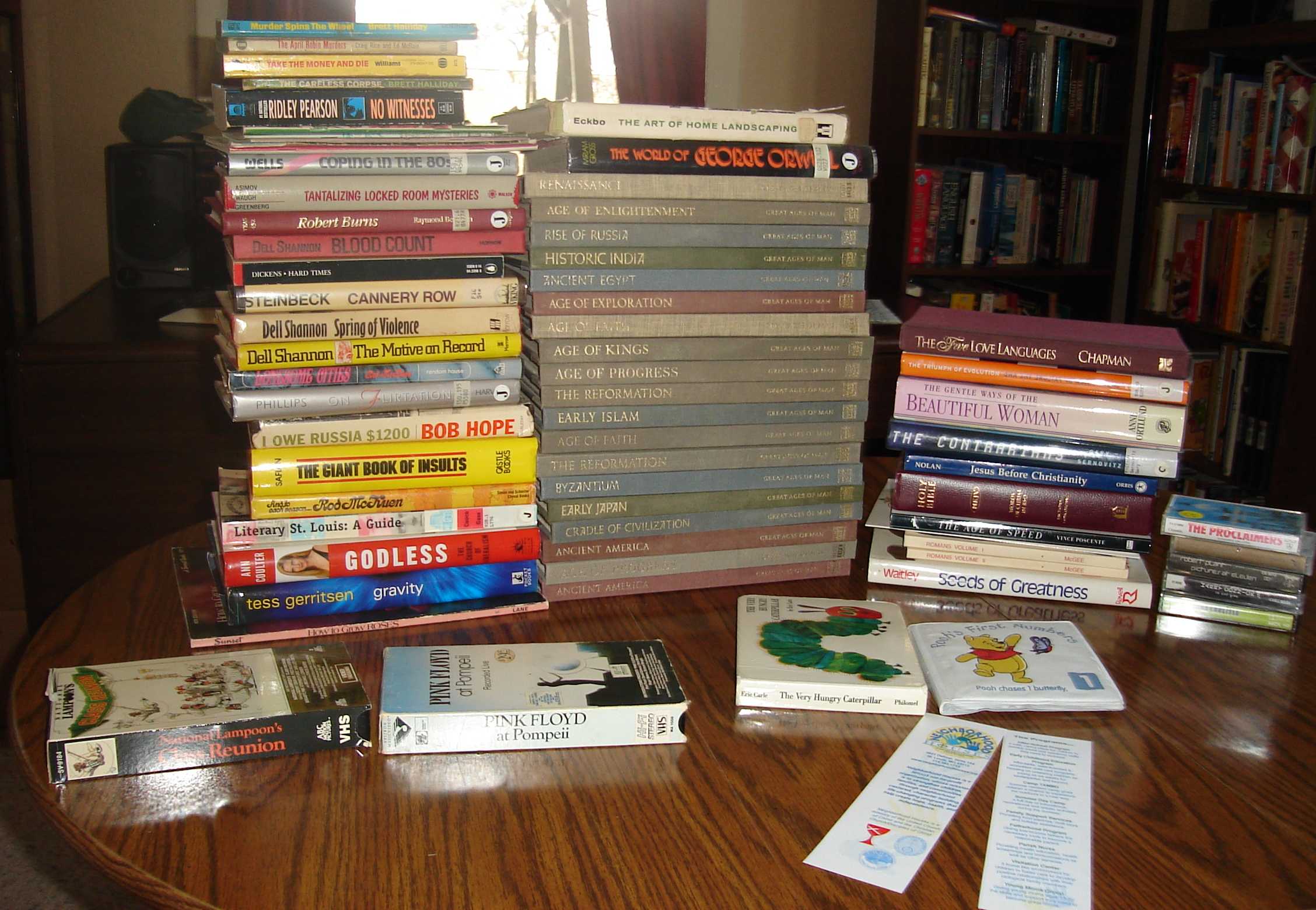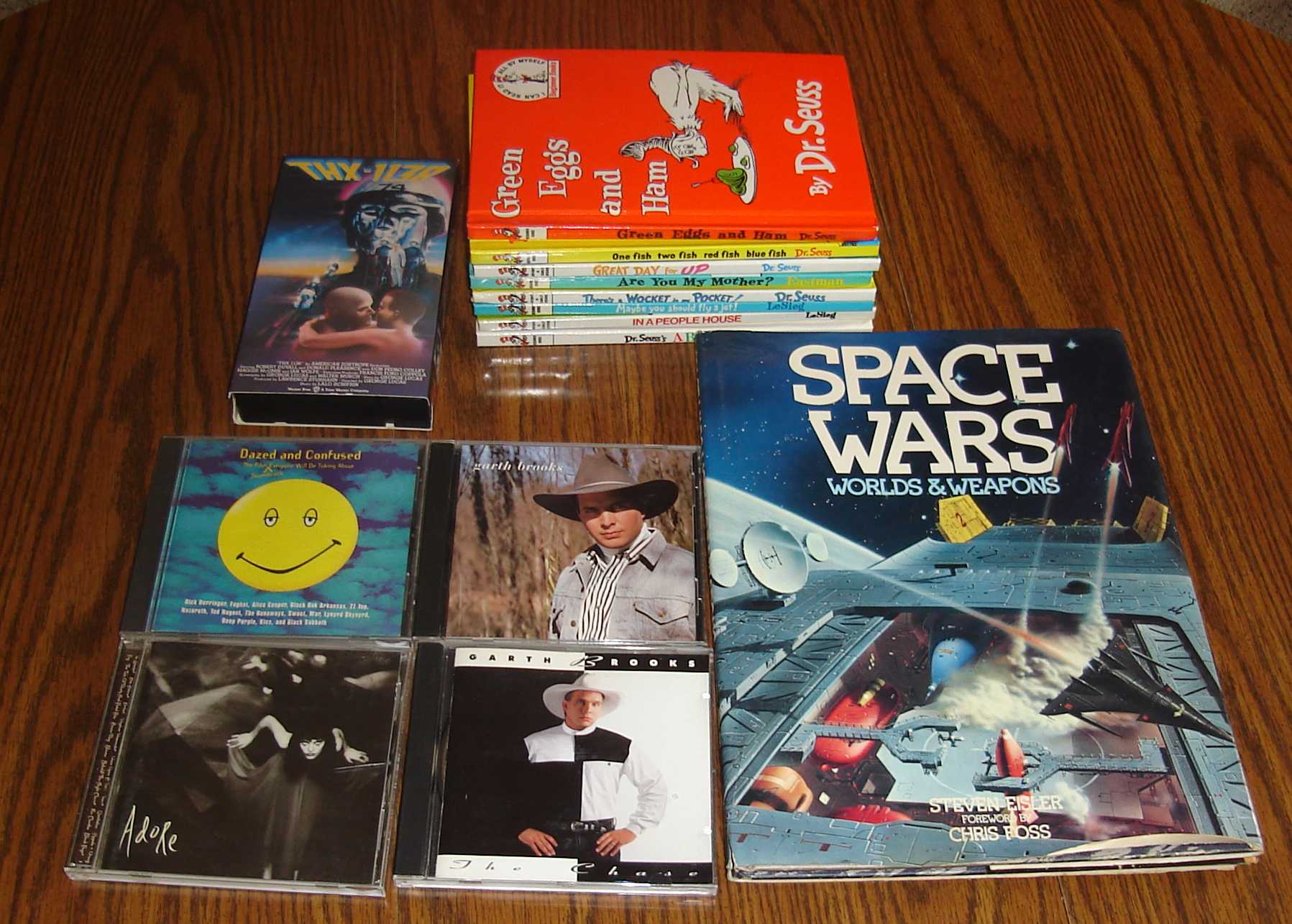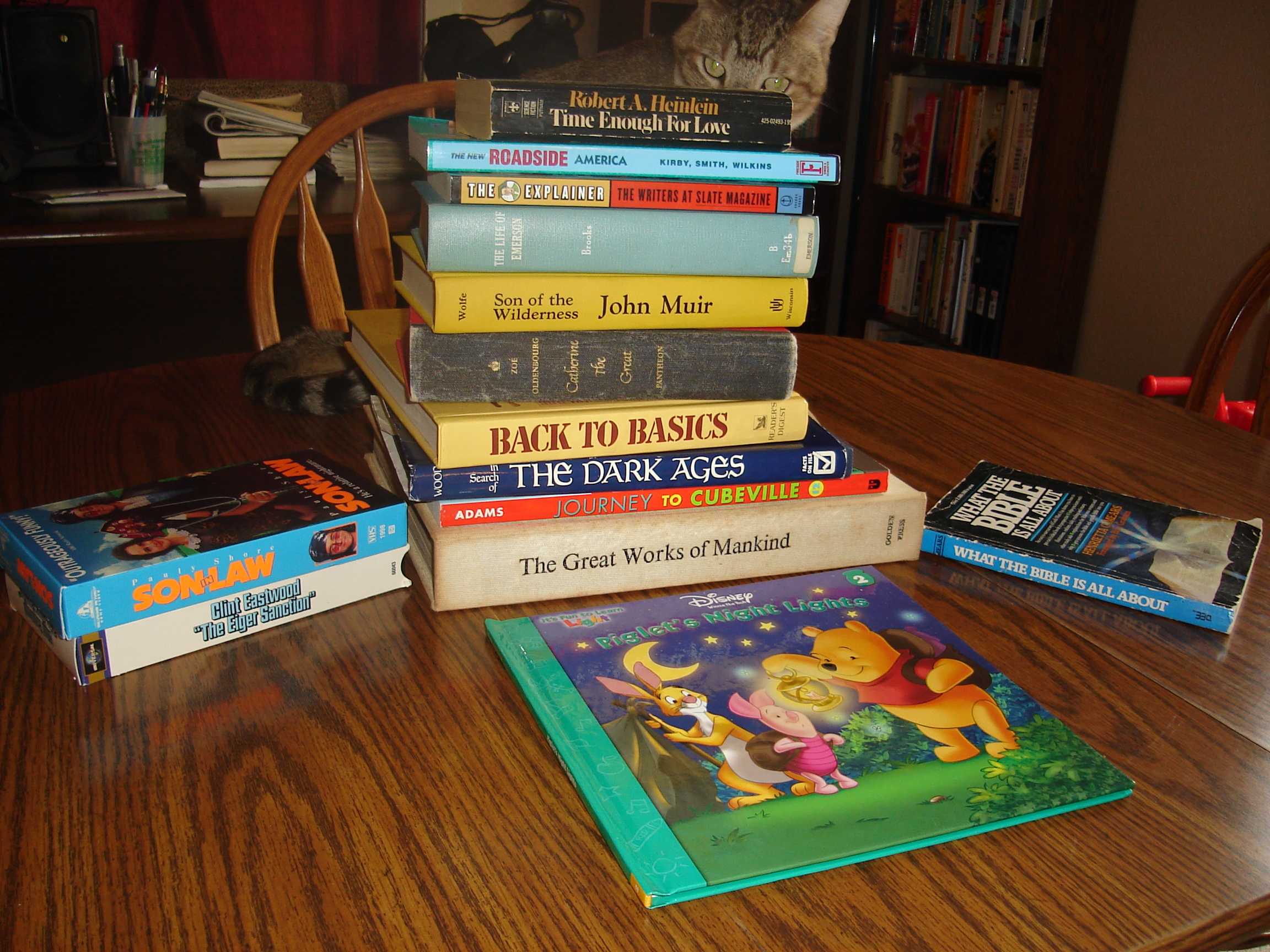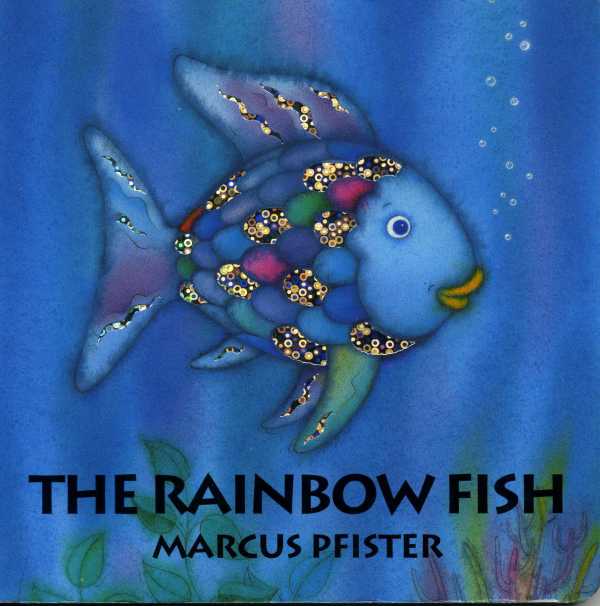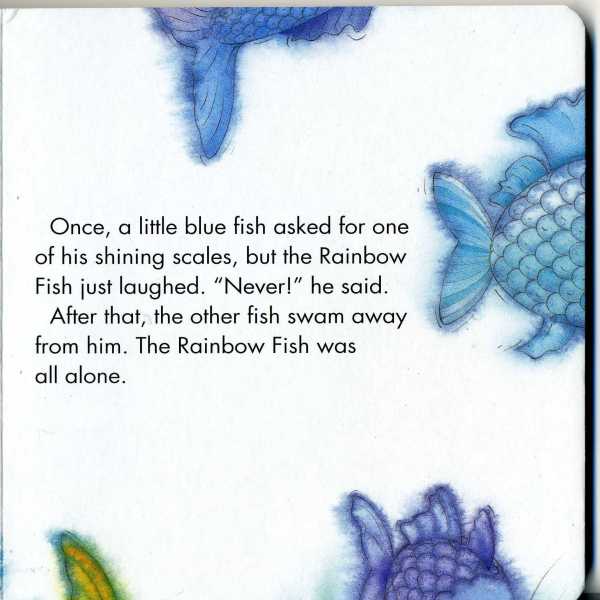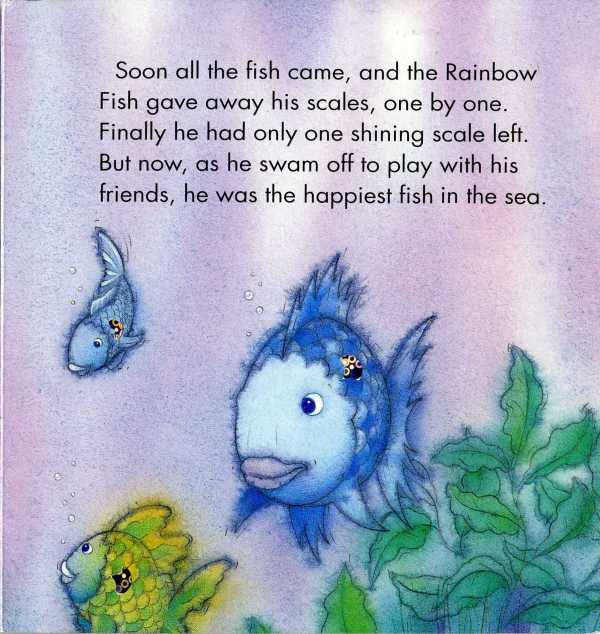Uh oh, it’s the annual Kirkwood Friends of the Library Book Fair. I hit the Automated Teller Machine Machine, entered my Personal Identification Number Number, and got out a pile of money, and oddly enough, it was just enough:
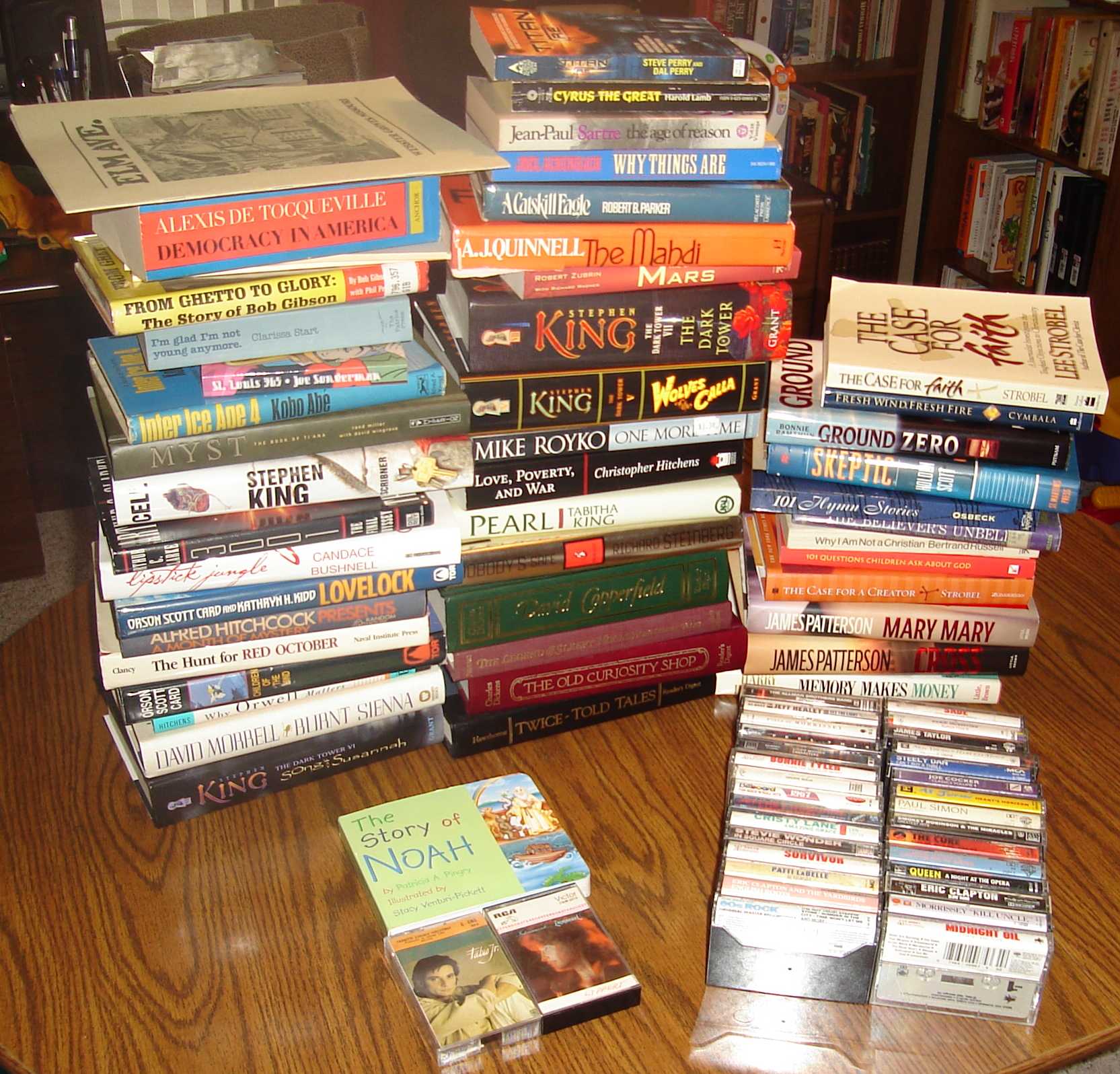
Click for full size
That’s $85 in books and $8 in audiocassettes; I bought most of the books, and my beautiful wife bought most of the cassettes, although our son apparently picked up two cassettes of his own while mommy was browsing and we bought them instead of wasting the time to put them back.
I got:
- A handout from a program in 1984 where local citizens put on a walking tour of their homes on a street that the county wanted to widen. 24 years later, the road is still only two lanes, but the county is chomping at the bit still to improve it. Recently, stop lights appeared on a cross street and last year, paint markings appeared showing where the current right of way extends so they can chop turn lanes out of people’s yards. Remember, when you fight city hall, you’re only fighting a holding action. Bureaugnarok is still coming.
- Democracy in America by de Tocqueville. Because I want to read about what that was.
- A couple of literary magazines from the late 1970s with Lyn Lifshin poetry in them. Because my wife collects them, so must I.
- An autobiography of Bob Gibson, because I’m watching a lot of baseball this year. And because they lowered the mound because of him.
- A book by the recently deceased Clarissa Start, a resident of this municipality for a while and the author of its official history and a former columnist for the St. Louis Post-Dispatch. This will be the third book of hers I’ve read and the second I own.
- St. Louis 365, a trivia bit about St. Louis.
- Inter Ice Age 4, a science fiction bit. A collection, I think.
- Myst: The Book of Ti’ana, because I’m suddenly into books from video games, I think (see below). The pages are special paper with a background design in them. I think that will annoy me when I start reading it.
- Cell, the latest novel from Stephen King.
- 3001: The Final Odyssey by Arthur C. Clarke. Completes my collection. For some reason, I left behind the hardback copy of 2001: A Space Odyssey. What kind of collector am I?
- Lipstick Jungle by the woman who wrote Sex and the City. To get in touch with my feminine and kinda slutty side.
- Lovelock, an Orson Scott Card title. Because the other bloggers say he’s good, I’ve accumulated a couple. However, I haven’t delved into one yet because some bloggers encourage you to read Greg Bear, too.
- Alfred Hitchcock Presents a Month of Mystery because sometimes these collections hit the spot.
- The Hunt for Red October by Tom Clancy. Earlier this year, I picked up a book club edition of this title; this is a fourth printing (not book club). I’m getting closer to the first printing, werd.
- Children of the End by Orson Scott Card. See above.
- Why Orwell Matters. I would have bought it on the title alone, but it’s Christopher Hitchens. Back in the last decade, I read No One Left To Lie To and I think it was okay, but this decade and the Internet have been good to him and my appreciation of him.
- Burnt Sienna by David Morrell. Bloody heck, aren’t two books (First Blood and Rambo: First Blood Part II) enough from this author this year? Maybe not.
- The Dark Tower V-VII by Stephen King. I read the first three when they came out. I guess I’ll have to pick up IV somewhere and probably re-read the first three if I’m to make a real run of it. However, I don’t think I really liked how III went, but it’s been a long time.
- Titan AE; I thought the book Forge of God reminded me of the trailer for the movie. I’ll have to see how the book compares to the trailer, since I’ve not seen the movie. I’ll probably like it better than Forge of God regardless.
- Cyrus the Great, a mass market paperback history of Cyrus of Persia. It might make me a better Civ IV player.
- The Age of Reason, a novel by Sartre. The book fair also had a copy of Nausea; the former is hard enough to find, and I’d never seen the former. But I own it now! It should brighten a day for me.
- Why Things Are by Joel A. I used to read his bits on WashingtonPost.com.
- A Catskill Eagle by Robert B. Parker. A first printing; I’ll have to see what my existing printing is.
- The Mahdi by A.J. Quinnell. I own Man on Fire (because it’s the novel upon which a movie is based, natch). In case I like it, I now own another book by the author. As you can see, at the Kirkwood Book Fair, it doesn’t take much of a rationalization for me to buy a book.
- The Case for Mars, a book arguing for space exploration and colonization. What’s not to like about that?
- One More Time, another collection by Mike Royko.
- Love, Poverty, and War, another Hitchens title that promises to cover three of my favorite things. Hopefully, there’s a sequel about guns, famine, and software quality assurance.
- Pearl by Tabitha King. I don’t remember seeing a book by Mrs. King before.
- Nobody Safe by Richard Steinberg. The title looked cool, the inside of the flap looked cool. How rarely I buy books based simply on that.
- David Copperfield by Charles Dickens in the Reader’s Digest edition (unabridged). Whereas if you order it from Reader’s Digest, it’s $30 by the time it’s all said and done. Here at the Kirkwood Book Fair, random pricing for these editions was in effect. This book was $4.50 (probably because it’s so thick) and the other titles in the series were $2-3.
- The Legend of Sleepy Hollow and Other Stories by Washington Irving in Reader’s Digest edition.
- The Old Curiosity Shop by Charles Dickens in the Reader’s Digest edition.
- Twice Told Tales by Nathaniel Hawthorne in the Reader’s Digest edition.
Whew, that’s quite a bit. Fortunately, our circumstances allowed us to go on a Friday. We spent a bit more than an hour before our toddler alarm went off, but that’s about as many books as I could carry anyhow.
Fortunately, though, there was a smaller book fair that evening at church, so I got a chance to spend the last of the hundred bucks I’d gotten at the ATM machine after entering my PIN number and whatnot. A smaller haul, to be sure:
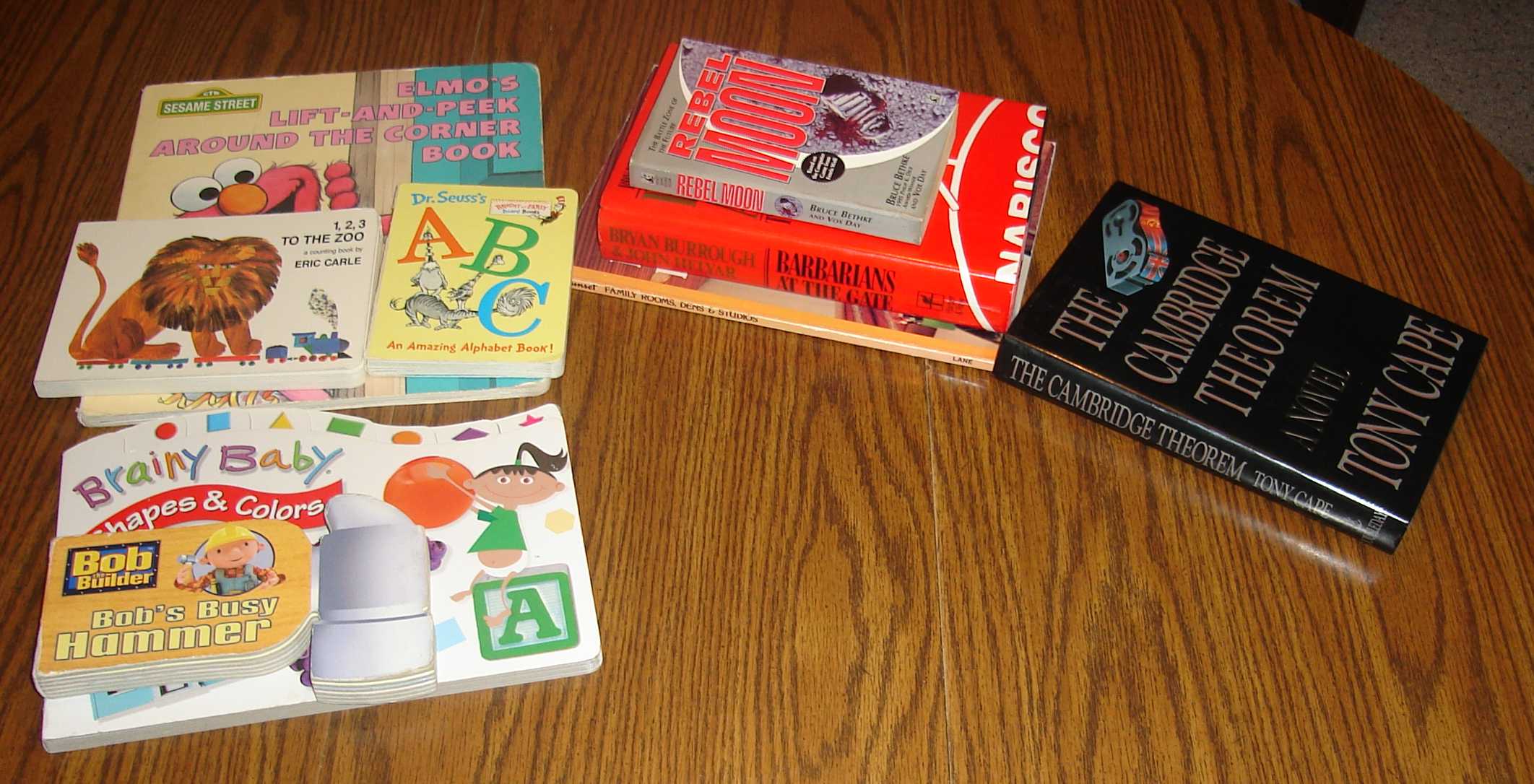
Click for full size
I got:
- Rebel Moon, another science fiction novel based on a video game.
- Barbarians at the Gate about the takeover of RJR Nabisco in 1988.
- Family Rooms, Dens, & Studios, a Sunset book. I think I might already have this one, actually, but its list price was fifty cents, so I had to get it just in case.
The boys made out like bandits, though.
Fortunately, the ATM machine was still there on Saturday morning for our weekend (proper) book hunting.
Total books acquired: 37 (and 2 literary magazines). Total spent (for family): $103.
Even more fortunately, these dangerous book fairs only come once a year, and only 3 or 4 are that tempting.



